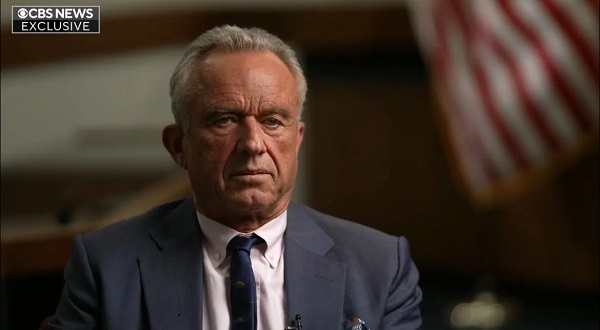Alberta
Come meet Canadian Olympic Heroes at the Alberta Sports Hall of Fame

Celebrate with Marco Arop, Nicholas Bennett, Diane Jones Konihowski, Lyndon Rush, Rebecca Smith, Reid Maxwell, and Molly Simpson
September 30, 2024 | Alberta Sports Hall of Fame, Red Deer, AB
The Alberta Sports Hall of Fame is excited to announce an exclusive Olympian Meet & Greet event on September 30, 2024, featuring a lineup of seven of Canada’s most celebrated athletes: Marco Arop, Nicholas Bennett, Diane Jones Konihowski, Lyndon Rush, Rebecca Smith, Reid Maxwell, and Molly Simpson. This unique event will give fans an extraordinary opportunity to meet these Canadian Olympians, learn about their journeys, and get inspired by their remarkable stories.
Each of these athletes has made significant contributions to their respective sports, representing Canada on the global stage with distinction:
- Marco Arop – A middle-distance running powerhouse, Marco Arop is a decorated 800m runner and World Championship medalist. His resilience, speed, and passion have inspired a new generation of track athletes.
- Nicholas Bennett – A Paralympic swimming sensation, Nicholas Bennett has set records in the pool and inspired countless fans with his dedication, determination, and stellar achievements on the international stage.
- Diane Jones Konihowski – An icon in Canadian athletics, Diane Jones Konihowski is a former Olympic heptathlete and gold medalist at both the Pan American and Commonwealth Games. Her storied career has earned her a lasting legacy in the world of sports.
- Lyndon Rush – An Olympic medalist in bobsleigh, Lyndon Rush is known for his skill and leadership on the ice track. His achievements in the sport have solidified him as one of Canada’s most notable bobsleigh athletes.
- Rebecca Smith – A talented swimmer who represented Canada at the Olympic Games, Rebecca Smith has earned accolades in international competitions, showcasing her strength and perseverance in the pool.
- Reid Maxwell – An accomplished swimmer, Reid Maxwell proudly wore the Canadian colours this year at hist first Paralympic Games in Paris.
- Molly Simpson – A rising star in BMX racing, Molly Simpson has demonstrated her skill and fearlessness on the international circuit. She continues to break barriers in the sport and inspire young athletes across the nation.

Event Highlights: Fans will have the chance to interact with these incredible athletes through autographs, photos, and personal conversations. Attendees will also hear firsthand accounts of their experiences at the highest levels of competition, from the challenges they faced to the triumphs that defined their careers. This event is a rare opportunity to connect with athletes from a wide range of sports, all of whom have represented Canada on the world stage.
Event Details:
Date: September 30, 2024
Time: 5:00 PM – 8:00 PM
Location: Alberta Sports Hall of Fame
4200 Queen Elizabeth II Highway, Red Deer, AB
Tickets: There is no charge for the Meet & Greet and entry to the Alberta Sports Hall of Fame is included. Guests will also have the opportunity to explore the museum’s engaging exhibits, which showcase the incredible history of sports in Alberta and the achievements of its most prominent athletes.

About the Alberta Sports Hall of Fame:
The Alberta Sports Hall of Fame is a museum dedicated to preserving Alberta’s rich sporting history. With interactive exhibits and a wide collection of artifacts, the Hall of Fame honors the athletes, coaches, and teams that have contributed to the province’s vibrant sports culture. Through events like the Olympian Meet & Greet, the Hall of Fame continues to engage the public and celebrate the athletes who have brought pride to Alberta and Canada.
Alberta
Alberta takes big step towards shorter wait times and higher quality health care

From the Fraser Institute
On Monday, the Smith government announced that beginning next year it will change the way it funds surgeries in Alberta. This is a big step towards unlocking the ability of Alberta’s health-care system to provide more, better and faster services for the same or possibly fewer dollars.
To understand the significance of this change, you must understand the consequences of the current (and outdated) approach.
Currently, the Alberta government pays a lump sum of money to hospitals each year. Consequently, hospitals perceive patients as a drain on their budgets. From the hospital’s perspective, there’s little financial incentive to serve more patients, operate more efficiently and provide superior quality services.
Consider what would happen if your local grocery store received a giant bag of money each year to feed people. The number of items would quickly decline to whatever was most convenient for the store to provide. (Have a favourite cereal? Too bad.) Store hours would become less convenient for customers, alongside a general decline in overall service. This type of grocery store, like an Alberta hospital, is actually financially better off (that is, it saves money) if you go elsewhere.
The Smith government plans to flip this entire system on its head, to the benefit of patients and taxpayers. Instead of handing out bags of money each year to providers, the new system—known as “activity-based funding”—will pay health-care providers for each patient they treat, based on the patient’s particular condition and important factors that may add complexity or cost to their care.
This turns patients from a drain on budgets into a source of additional revenue. The result, as has been demonstrated in other universal health-care systems worldwide, is more services delivered using existing health-care infrastructure, lower wait times, improved quality of care, improved access to medical technologies, and less waste.
In other words, Albertans will receive far better value from their health-care system, which is currently among the most expensive in the world. And relief can’t come soon enough—for example, last year in Alberta the median wait time for orthopedic surgeries including hip and knee replacements was 66.8 weeks.
The naysayers argue this approach will undermine the province’s universal system and hurt patients. But by allowing a spectrum of providers to compete for the delivery of quality care, Alberta will follow the lead of other more successful universal health-care systems in countries such as Australia, Germany, the Netherlands and Switzerland and create greater accountability for hospitals and other health-care providers. Taxpayers will get a much better picture of what they’re paying for and how much they pay.
Again, Alberta is not exploring an untested policy. Almost every other developed country with universal health care uses some form of “activity-based funding” for hospital and surgical care. And remember, we already spend more on health care than our counterparts in nearly all of these countries yet endure longer wait times and poorer access to services generally, in part because of how we pay for surgical care.
While the devil is always in the details, and while it’s still possible for the Alberta government to get this wrong, Monday’s announcement is a big step in the right direction. A funding model that puts patients first will get Albertans more of the high-quality health care they already pay for in a timelier fashion. And provide to other provinces an example of bold health-care reform.
Alberta
Alberta’s embrace of activity-based funding is great news for patients

 From the Montreal Economic Institute
From the Montreal Economic Institute
Alberta’s move to fund acute care services through activity-based funding follows best practices internationally, points out an MEI researcher following an announcement made by Premier Danielle Smith earlier today.
“For too long, the way hospitals were funded in Alberta incentivized treating fewer patients, contributing to our long wait times,” explains Krystle Wittevrongel, director of research at the MEI. “International experience has shown that, with the proper funding models in place, health systems become more efficient to the benefit of patients.”
Currently, Alberta’s hospitals are financed under a system called “global budgeting.” This involves allocating a pre-set amount of funding to pay for a specific number of services based on previous years’ budgets.
Under the government’s newly proposed funding system, hospitals receive a fixed payment for each treatment delivered.
An Economic Note published by the MEI last year showed that Quebec’s gradual adoption of activity-based funding led to higher productivity and lower costs in the province’s health system.
Notably, the province observed that the per-procedure cost of MRIs fell by four per cent as the number of procedures performed increased by 22 per cent.
In the radiology and oncology sector, it observed productivity increases of 26 per cent while procedure costs decreased by seven per cent.
“Being able to perform more surgeries, at lower costs, and within shorter timelines is exactly what Alberta’s patients need, and Premier Smith understands that,” continued Mrs. Wittevrongel. “Today’s announcement is a good first step, and we look forward to seeing a successful roll-out once appropriate funding levels per procedure are set.”
The governments expects to roll-out this new funding model for select procedures starting in 2026.
* * *
The MEI is an independent public policy think tank with offices in Montreal, Ottawa, and Calgary. Through its publications, media appearances, and advisory services to policymakers, the MEI stimulates public policy debate and reforms based on sound economics and entrepreneurship.
-

 2025 Federal Election2 days ago
2025 Federal Election2 days agoResearchers Link China’s Intelligence and Elite Influence Arms to B.C. Government, Liberal Party, and Trudeau-Appointed Senator
-

 Business2 days ago
Business2 days agoTimeline: Panama Canal Politics, Policy, and Tensions
-

 COVID-192 days ago
COVID-192 days agoFauci, top COVID officials have criminal referral requests filed against them in 7 states
-

 2025 Federal Election2 days ago
2025 Federal Election2 days agoPoilievre Announces Plan To Cut Taxes By $100,000 Per Home
-

 Health2 days ago
Health2 days agoRFK Jr. Shuts Down Measles Scare in His First Network Interview as HHS Secretary
-

 Health2 days ago
Health2 days agoRed Deer Hospital Lottery – Previous Supporter Draw Deadline!
-

 Bjorn Lomborg2 days ago
Bjorn Lomborg2 days agoThe stupidity of Net Zero | Bjorn Lomborg on how climate alarmism leads to economic crisis
-

 International2 days ago
International2 days agoTrump White House will ignore reporter emails that include ‘preferred pronouns’ in signature






